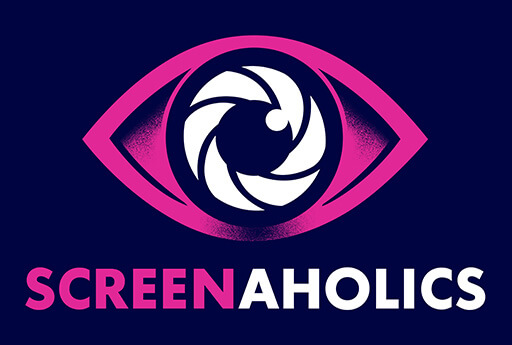Recent cinema and television has been littered with dystopian visions of technology impacting our lives, from the Black Mirror franchise to Netflix’s TAU (2018), Ready Player One (2018) and Blade Runner 2049 (2018).
Perhaps this resurgence in the theme of dark technology comes from our modern social media filled lives; an inevitable impact of the cyber-augmented reality we have come to live in. A lurking paranoia manifesting in our modern art forms; that of hi-tech machinery and computer platforms becoming more powerful than us.
Of course, the theme of dystopian futures brought on by technology is not a new statement in itself, and its roots are as old as the genres of science-fiction and speculative fiction themselves. With pioneers like H.G. Wells, Jules Verne and Isaac Asimov providing the groundwork for our paranoia over Westworld-style robot rebellions, dangerous artificial intelligence and the perils of the space race. The flame was carried on by icons like Phillip K. Dick and J.G. Ballard in fiction, who would eventually influence the subtle analysis of technology controlled social systems, such as those presented in the nuanced scathing social media parody of Black Mirror episodes like ‘Nosedive’.
Cinema itself was born through technological innovation, from pioneers like the Lumierè brothers and Thomas Edison, so unsurprisingly, the themes of science and technology have run concurrently alongside film plots since cinema’s earliest days. The railroad was a powerful early symbol of the new industrial era and this was quickly embodied in film, as a metaphor for the dangers of industrial machinery. For instance, John Ford’s The Iron Horse (1924) depicted the building of the transcontinental railroad at the Promontory Summit in Utah. Utilising black and white cinematography with stark contrast and a sense of dominating strength, this film paved the way for many forms of critiquing technology to come.

Bryce Dallas Howard in the Black Mirror episode ‘Nosedive’ (Season 3, Episode 1).
Perhaps one of the most lauded early masterpieces which critiqued modernity and the urban city centre forged by industrialisation, was Fritz Lang’s Metropolis (1927). A monumental piece of art, in both style and substance, Metropolis depicted a futuristic city sharply divided between the working classes and privileged bourgeoise city planners. In a fantastic climax, as pandemonium is unleashed by a Frankenstein-style creation of the sinister scientist Rotwang; a final warning is left for humanity – “The mediator between the head and the hands must be the heart”.
This common theme of speculative fiction, in fact, resonates through many films throughout the 21st century. We are in control of what happens tomorrow. Metropolis was reborn in 2001 in a stunning Japanese anime interpretation of Fritz Lang’s classic film – utilising the artworks of Osamu Tezuka (whose own creation, Astro Boy, was itself a dark reflection of humanity’s attempt to dabble in the creation of artificial intelligence). American science-fiction movies throughout the 1950’s were often little more than tacky monster flicks, however, the theme of dark technology returned with force in the late 1960’s with Stanley Kubrick’s 2001: A Space Odyssey (1968). Based on the Arthur C. Clarke novel, Space Odyssey terrified audiences with the character HAL 9000; a sentient machine which develops a murderous mind of its own during a space mission to Jupiter. Many of Kubrick’s other films, such as A Clockwork Orange (1971) and Full Metal Jacket (1987) also visited technological and weaponry advances, holding a dark sway over modernity. The image of Alex with his eyes held open by hooks, as he views images on a screen in A Clockwork Orange still evokes the media-saturated landscape of modern social media.
Whilst the vision of space operas such as Star Wars: A New Hope (1971) ventured far outside the spectacle of planet earth, director George Lucas explored darker technological themes in his directorial debut, THX 1138 (1971). This film, set in a dystopian future in which the populace is controlled through android police and mandatory use of drugs (heavily influenced by Huxley’s Brave New World and Orwell’s 1984), features themes that are still deeply relevant today. Of course, cyberpunk burst into swing as the 1980’s rolled over. Australian director George Miller’s classic Mad Max (1979) portrayed post-apocalyptic fears that technological innovation might enhance our ability to destruct, more than our ability to create a sustainable future. The climactic scene in Mad Max, in which a man is left handcuffed to a car-bomb-planted vehicle, with his only means of escape is to saw off his own hand, served as the inspiration for James Wan and Lee Whannell when they wrote the iconic Saw (2004) film. What more potent symbol of the suffocation and claustrophobia of metropolitan commodified life and torturous machinery of our innovation could there be, than that paranoid torture porn franchise?

Malcolm McDowell in Stanley Kubrick’s controversial 1971 masterpiece ‘A Clockwork Orange’.
Much of the 1980’s was too fun to be genuinely reflective, with vibrant synth-pop music and neon lights dominating the aesthetic (which modern works like Stranger Things and 2017’s IT have recently attempted to reflect). The aesthetics of Tron (1982) were as idealistic and exciting as they were terrifying to audiences, but nonetheless, this growing futuristic look would wax and wane from a place of optimism to a dark tower of eclipsing terror, waiting to annihilate every attribute that we humans defined ourselves by. The trope of the ‘hacker’ protagonist who enters a dark cyber world, littered fiction during the late 21st century in iconic novels such as William Gibson’s ‘Neuromancer’ or Neal Stephenson’s ‘Snow Crash’, which nutted out the imagery that would be associated with the ‘virtual space’ of the World Wide Web – then still in its infancy. In War Games (1983), a young Mathew Broderick plays David Lightman, a teenage computer nerd who inadvertently sets off World War Three after hacking into a government computer (thinking it is a video game). It became something of a cliché for 1980’s movies to have a group of menacing cyber-punks symbolising the destruction of western civilisation, lurking constantly in the darkness.
Such were the opening scenes of James Cameron’s Terminator (1984), where a robot Arnold Schwarzenegger destroys a group of arrogant punks. The concept of Skynet in the Terminator films, a futuristic singularity, in which machines overpower humanity and set about to annihilate our species – remains a terrifying one.
David Cronenberg, a pioneer of the burgeoning ‘body horror’ genre made a terrifying statement with Videodrome (1983). In Videodrome, James Woods plays Max Renn, who stumbles on a mysterious snuff-porn-ring. Ignoring a warning to stay away, Renn then unlocks a portal to a psychosexual transgression and physical transformation fusing with technology, at one point almost climbing into his television set and engaging erotically with the grotesque ‘New Flesh’. Cronenberg’s eXistenZ (1999) would return again to the strange dark themes of the aforementioned film, splicing technological virtual reality with grotesque deformity and violence toward physical human flesh. This also brings to mind concurrent explorations in the arts, such as Melbourne born, body performance artist Stelarc.

James Woods in David Cronenberg’s 1983 body horror film ‘Videodrome’.
Virtual reality became a very pressing theme in the 1990’s, with a series of movies exploring the often fatal engagement with secondary ocular planes, such as in The Lawnmower Man (1992), Johnny Mnemonic (1995) and The Matrix (1999). The Lawnmower Man, though a rather silly movie, did portray this primitive conception of how the virtual landscape was then envisioned (polygon surfaces and strange rotating hyper-coloured forms) quite effectively.
One seminal film during this time, which I remember quite explicitly watching when I was younger was Ghost in the Machine (1993). Directed by Rachel Talalay, this was by no means the best of its kind, but it does somehow embody where global fears had come to dwell at the turn of the century. The plot was quite simple but engaging. ‘The Address Book Killer’ (a technician who works in a computer store), named Karl Hochman, has the MO of murdering people he finds in stolen address books. Whilst pursuing his latest victims during a thunderstorm, Hochman runs off the road and crashes his car. In the habit of similar rebirth stories (such as Charles Lee Ray in 1988’s Child’s Play), while Karl is undergoing an MRI at a hospital, a surge of lightning strikes the building and the murderer’s mind is transformed into electrical energy, liberating him to roam freely around the city via technology.
This device allows for a very interesting experiment in the dark technology genre, for it combines all of the previously utilised fears from Space Odyssey’s HAL to Terminator’s Skynet. What happens if you take the darkest aspect of humanity (a murderer’s mind) and merge that with the power to control all our technology? An anti-christ figure suddenly emerges, who works through our technology, dominating everything we perceive as what we cannot as human beings, control.
It’s a theme that is explored in many other films, particularly in supervillain origin stories (Willem Dafoe’s Green Goblin or Alfred Molina’s Doctor Octopus in Sam Raimi’s Spiderman franchise immediately spring to mind). Director Paul Verhoeven’s subversive Robocop (1987) portrayed a dystopic crime-ridden Detroit in which technology became the only saviour for humanity. However, in the sequel, the criminal mind entering a monstrous piece of technology was again explored in the character of ‘Cain’. Verhoeven has returned to the theme of humanity’s relationship with technology time and time again, for instance in his adaption of Phillip K. Dick’s Total Recall (1990), which included body horror and trans-humanist themes, and the perils of messing around with the fragile human brain. Starship Troopers (1997), another fantastic and darkly humorous satire from Verhoeven, depicts the way in which military propaganda spread across the screen-based media, which can work to create a society of remorseless killers who engage with profitable wars without questioning the moral outcomes.

Arnold Schwarzenegger stars in Paul Verhoeven’s classic sci-fi action film ‘Total Recall’ (1990).
12 monkeys (1995) was Terry Gilliam’s exploration of the dangers of time travel. Bruce Willis strolls grumpily from a steampunk bunker to the past, as he attempts to prevent an anarchic apocalypse. Of course, The Truman Show (1998) dealt explicitly with our fears of being watched, in a world increasingly caught on camera. The advances in VR, such as the Oculus Rift system, comes very close to the total immersion in a new world which The Matrix (1999) had presented. In 2001, Steven Spielberg directed A.I. (a film that dates better than it appeared in its initial reception) – a sad fairytale about a childlike android who wants to be a real boy, in the vein of Pinocchio. Tom Cruise played John Anderson in Minority Report (2002), where, in the year 2054, the law has found a way to stop murders before they happen, which resonates with modern technology and preventative methods of law enforcement in use today.
A more impressive film, which carried on the theme of how technology could affect us if we play around with our fragile minds came from a Charlie Kaufman script. A story which became Eternal Sunshine of the Spotless Mind (2004). In this film, Jim Carrey plays the introverted Joel, who attempts to have all mental traces of a previous relationship wiped away. This almost preempted the fantastic Black Mirror episode ‘The Entire History of You’. The year 2009 produced Gamer, with Gerard Butler playing a death row inmate forced to play a violent online game called ‘Slayers’ (essentially being little more than a high-tech slave). Showing that the relationship between technology and class is still as much of an issue as it was during the days of Lang’s Metropolis.
The twenty-tens didn’t start strongly as a decade for speculative fiction, however, it did begin to show the shifting in human perceptions and fears towards our technology, whereas the focus of the Ghost in the Machine lingered on a future where virtual reality, Skynet, or some other system lurked on the horizon as a terrifying possibility. As we moved into the current decade, the existing networks established by the internet and social media suddenly triggered its own wave of paranoia. People were no longer afraid of some looming catastrophe waiting in the wings; we began to be afraid of what we had already built.

‘The Matrix’ (1999) broke new ground in dark technology themed films.
Twenty-ten brought Catfish, bringing to attention the now common phrase. It presented the idea that people you meet on the internet are not always who they say they are. That same year The Social Network (2010) dropped to an audience eagerly awaiting an explicitly negative sentiment about the predominant platform Facebook. Up until then, the new media had only really been discussed in positive terms, with people praising the ease of connectivity, the social excitement of memes and a landscape where you could know what everyone was doing. Suddenly the ramifications of having a corporate giant like Facebook dominating the new media came into view. Mark Zuckerberg was suddenly re-appraised as a sinister and Machiavellian figure, who was never really inspired by social motivations, but purely interested in profiting off susceptible rubes. This would be carried even further with Ivan Reitman’s son, Jason Reitman’s directorial debut – Men, Women and Children (2014) – which challenged the so-called ‘social’ nature of the new media. Reitman presented a world of deep loneliness, isolation and suffocation where everyone was pretending to be something they weren’t, just to keep up with their peers online. Of course, there was Hunger Games (2012), based off the Japanese Battle Royal (2000), which took on a global perspective, weighing out the optimism of technology as saviour, compared to the reality of vast inequality, starvation and suffering playing out the world over.
Jake Gyllenhaal was well cast in Source Code (2011) as Colter Stevens, part of a top-secret military operation enabling him to experience the last few minutes in the life of a man who died in a commuter train explosion. This movie explored the inability of our technology to hold back the final looming catastrophe of all human lives – death (with precedents like the Final Destination franchise). Looper (2012) also built on the wonky technology of time travel and the moral choices of bungling with the universal constants of physics.
As the decade gears up we’ve had no shortage of these types of films and given this technology only appears to be growing in influence, it seems likely we will continue to explore these fears as the century approaches its midway. Joaquin Phoenix was very convincing as the hipster greeting card writer Theodore in Her (2013). Playing off real-life problems, such as in Japan (where men actually date virtual A.I.), Theodore falls in love with his new operating system (voiced by Scarlett Johansson). The never-ending destruction of war was explored in Edge of Tomorrow (2014) or ‘Live Die Repeat’ as it was originally known, in which, Tom Cruise is destined to play out the same day again and again, in a dystopian Groundhog Day style. It was also a decade of reboots, with Mad Max Fury Road (2015) and Blade Runner 2049 re-instilling the pessimistic cyber-noir imagery of the previous century into our minds, making us re-explore our deep fears of the looming future. There was Prometheus (2012), the follow up to the Aliens franchise, which showed that our fears (or at least the fears of Ridley Scott) were less oriented on slimy alien beings as they were on artificially intelligent robots who planned our destruction.

Michael Fassbender plays the android David in Ridley Scott’s ‘Prometheus’ (2012).
The invisible boogeyman of technology takes many forms and shapes, from A.I. and evil robots to time travel mistakes, dangerous social media platforms and mass methods of government and social control. As our technology continues to improve at a rapid rate, no doubt our fears will manifest in cinema in new and horrifying ways we don’t even suspect yet. No doubt the theme of dark technology is an interesting one that continues and will continue, to fascinate us.
Revisiting old films in the genre can sometimes be less than rewarding, as the technology depicted is so dated it is completely laughable. Or perhaps the artist got it so wrong it is no longer remotely scary. Ghost in the Machine, particularly, was an interesting turning point in our technological fears. Maybe it is worth revisiting precisely because technology has changed its course so much since then. The fears of this 1990’s classic are no longer the same as the fears of today.
Nonetheless, it is an interesting look at a time before the digital world became an ever-present network. A time where we could imagine a spectre who haunted us somewhere between the MRI scanner at a hospital, the telephones and television sets, and toasters in our household. Between the weapons of our arsenal and electricity coursing through powerlines outside. Perhaps the creators were closer to the mark than we give them credit for, after all, this invisible spectre would actually emerge in the coming decades in the new digital landscape, invisible to us, yet so interdependent to our lives. The ‘Ghost in the Machine’ perhaps was always there and has only manifested in recent times. Now it is a living web that connects us all, with energy particles, invariably linked to that dark void on the precipice of the universe.
Fun Fact:
Approximately 40 minutes into Ghost in the Machine, a computer is scrolling through a list of names in a phone book to be its next murder victim. The names listed are almost all Hollywood producers.




COMMENTS